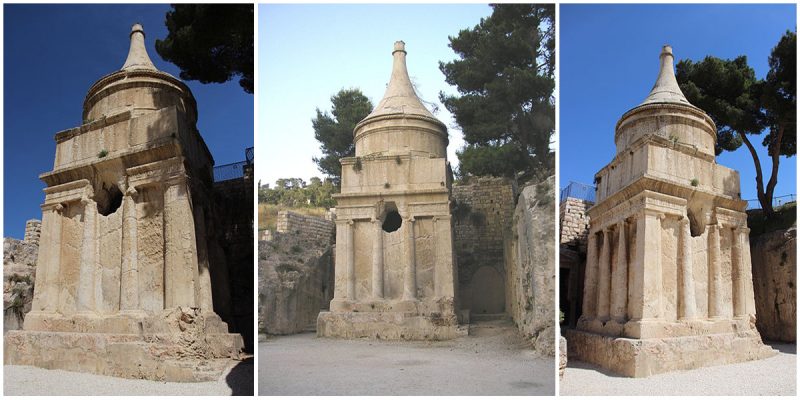The Tomb of Absalom (also called Absalom’s Pillar, Yad Avshalom, and Absalom’s Shrine) is an ancient monument in the upper Kidron Valley on the east side of Jerusalem.
It is the most impressive and complete of the ancient tombs of wealthy Jewish families that lived in Jerusalem during the era of the Second Temple. This entire area is a large cemetery with thousands of tombs, and this is one of the largest and the most beautiful.
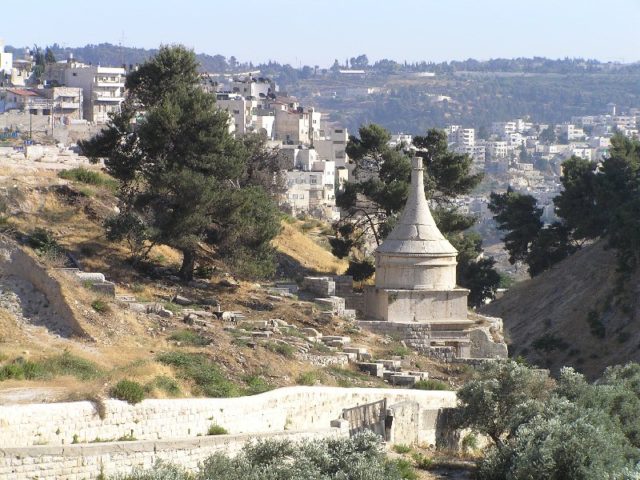
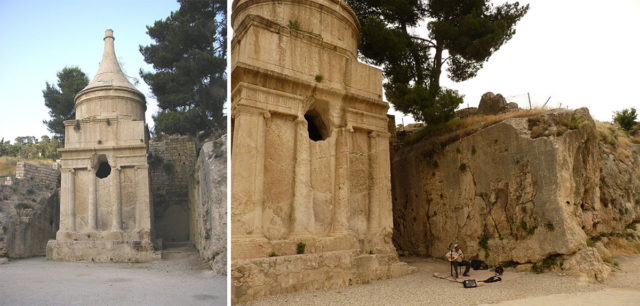
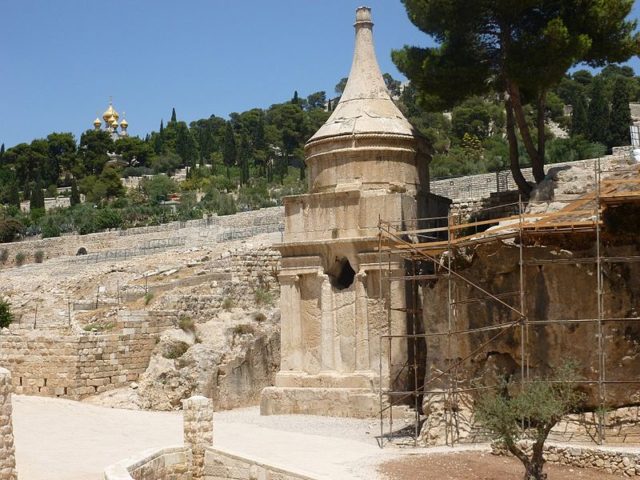
Standing 22 meters high, the structure with the conical dome was identified for years in Jerusalem tradition as the burial site of Absalom, the rebellious son of King David of Israel, based on a verse in the Book of Samuel.
Although traditionally ascribed to Absalom, an analysis of the architectural styles used indicates that the monument’s construction and its first stage of use happened during the 1st century CE, one thousand years after Absalom’s death. It’s an example of Egyptian, Oriental, and Hellenistic architecture with the lower part built on a square base with vaults for burial chambers.
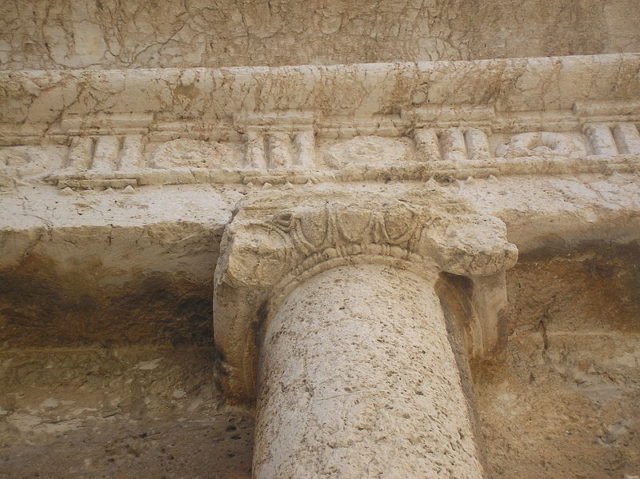
It was probably also the Nefesh or burial monument for the adjacent burial cave system known as the Cave of Jehoshaphat – an imposing rock-cut tomb behind Absalom’s Tomb, with eight finely hewn burial chambers. Most of the chambers contain rock-cut benches for placing sarcophagi or ossuaries.
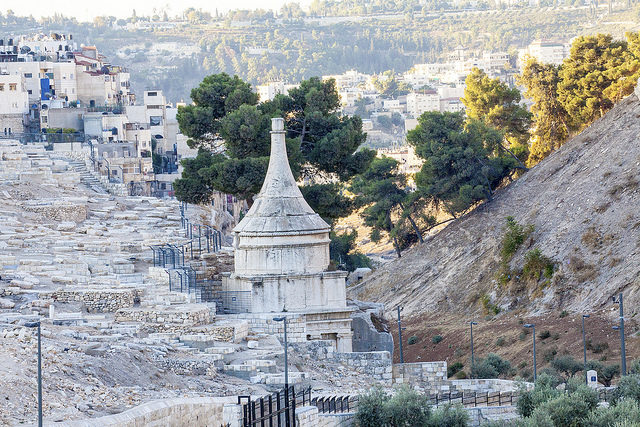
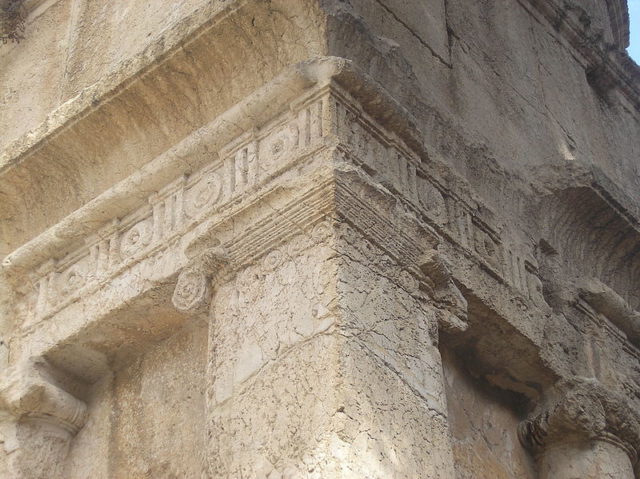
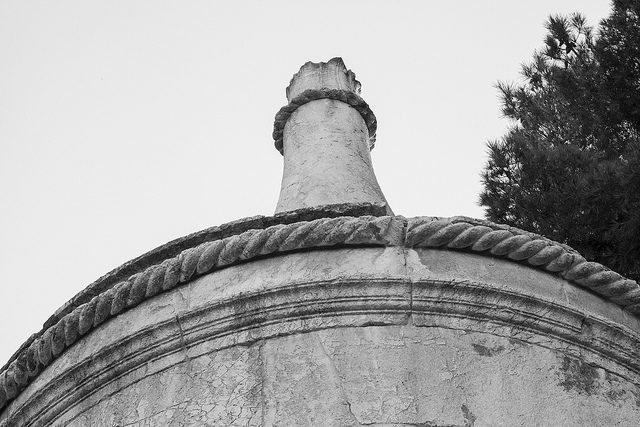
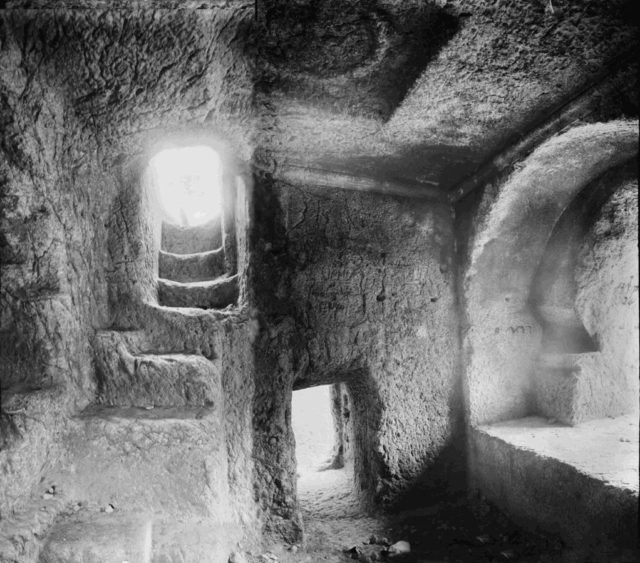
The monument proper stands on a square base and consists of two distinct parts. The lower section, in the shape of a cube set on a podium, has been hewn out of the rocky slope of the Mount of Olives, while the upper part, rising higher than the original bedrock and shaped like a conical pyramid, is built of neatly cut ashlars and it is surmounted by a lotus flower carved in stone.
This is a symbolic separation that symbolizes the separation between the body buried in the ground and the person’s soul.
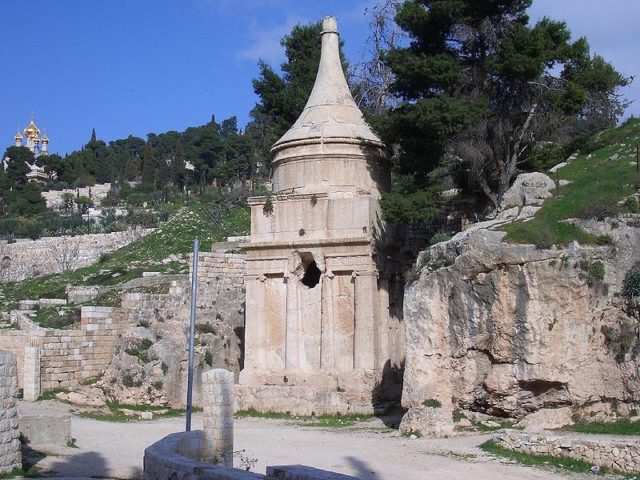
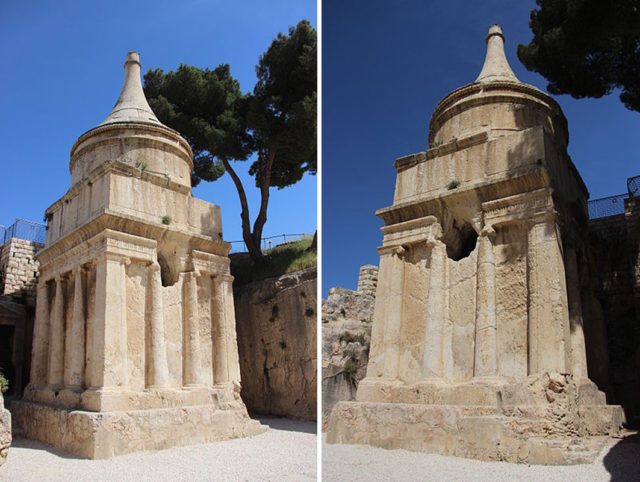
Read another story from us: New ancient tombs discovered in Egypt
Over the centuries, a tradition has developed around the Tomb of Absalom. Jerusalem’s residents would bring their rebellious sons to the site to throw stones at the tomb of the boy who lifted his hand against his father, to remind their sons of the punishment meted out to a rebellious a son – stoning.
